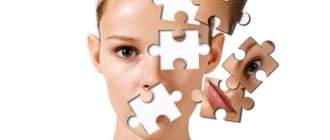Manic state is a pathology characterized by psychomotor agitation, unreasonably elevated mood up to euphoria, and an accelerated pace of thinking. Mania (Greek – passion, madness, attraction) has been known to people since ancient times, when any condition accompanied by screaming and chaotic movements was taken for it.
In the Middle Ages, the disease was considered a manifestation of hysteria, since the latter is also manifested by noisy behavior attracting attention to itself. In modern psychiatry, mania is classified as a group of affective disorders and is identified as a separate condition under the code F 30.
Etiology of the disease
Manic syndrome is a condition that occurs:
- as part of bipolar disorder (MDP), a mental illness that combines periodic alternations of mania and depression;
- for psychoses of various etiologies (infectious, somatic, organic);
- as a symptom of schizophrenia in combination with delusions;
- as a result of drug or drug intoxication;
- after a somatic illness or surgery.
How dangerous is a maniac for himself and for people?
In about half of the cases, there is an increase in the consumption of alcohol or drugs by the manic person.
Manic syndrome also carries various social risks. A person can cause inconvenience to himself, for example, with inappropriate jokes or arrogant behavior. The public, as a rule, is not sufficiently informed about a person’s mental state, and associates such behavior with the characteristics of his character. This significantly complicates the personal and social life of a manic person.
The significant financial losses that accompany reckless behavior in the manic phase often lead to subsequent social problems, logically related to the partner or marital relationship, which may also be negatively affected by this mental disorder.
Mania is a mental disorder that, unfortunately, cannot be prevented because... such disorders are mainly associated with hereditary transmission.
A healthy lifestyle, sufficient physical activity, avoidance of stressful and emotionally difficult situations and factors, regular and high-quality sleep, avoidance of alcohol and other psychoactive substances (marijuana, LSD, cocaine, methamphetamine, etc.) can bring certain benefits.
Types of manias
There are more than 142 known types of manic episodes. The most common of them are presented in Table 1.
Table 1. Types of manic episodes
| Type of mania | Characteristic |
| Agoramania | Attraction to open spaces |
| Bibliomania | Unhealthy hobby of reading |
| Hydromania | Irrational desire for water |
| Graphomania | Obsession with writing |
| Dromomania | Uncontrollable wandering |
| Zoommania | Crazy love for animals |
| gambling addiction | Craving for games |
| Kleptomania | Attraction to theft |
| Megalomania | Abnormal tendency toward grandiose behavior |
| Persecution mania | A condition in which a person feels like they are being watched |
| Addiction | Uncontrollable cravings for drugs |
| Pyromania | Uncontrollable urge to set fires |
| Substance abuse | Painful attraction to poisons |
According to severity they are distinguished:
- mild – euphoria, acceleration of speech, irritability due to trifles;
- moderate - rash actions, outbursts of aggression, hostility, maybe delusions of grandeur;
- severe – extreme activity, delusions of grandeur combined with hallucinations, overestimation of one’s capabilities.
A milder form of manic syndrome is hypomania, which is characterized by increased performance and high spirits that do not go beyond the bounds of reason. It is believed that it was in this state of mind that discoveries were made, brilliant ideas came to mind, and the wildest dreams came true. This is a transitory state in which every person has been at least once. They say about hypomania: “the soul sings.”
Depending on the presence or absence of psychotic symptoms, the disease is of two types.
Mania without psychotic symptoms
These forms are not accompanied by delusions and hallucinations:
- classic - manic triad - acceleration of thinking and speech, increased mood, motor agitation;
- angry – in the triad the mood changes to irritability, conflict, and a tendency to aggression;
- manic stupor - motor retardation is present in the triad;
- unproductive – in the triad – slowing down of thinking;
- joyful – euphoria, restlessness, motor excitement;
- confused - chaotic acceleration of associations, “jump of ideas”;
- hypochondriacal – combination with hypochondria (fear of contracting fatal diseases).
Mania with psychotic symptoms
Manic syndrome with psychotic symptoms is characterized by the presence of delusions and hallucinations. Delusions of grandeur are often stated, corresponding (congruent) and inappropriate (incongruent) to the mood. When hallucinations are added, manic-hallucinatory-delusional syndrome is diagnosed.
Oneiric mania is accompanied by a dreamlike disturbance of consciousness with hallucinations.
Severe forms include acute manic states with paraphrenic (fantastic) delirium. Somatic disorders are added. Consciousness is darkened. Hyperacute mania is characteristic of organic brain damage.
Reasons for appearance
In addition to the signs listed above, there are several characteristic symptoms that unite almost all manic states:
- Tendency to thoughtlessly waste money.
- Tendency to make bad deals and gamble.
- Frequent violation of the law.
- Tendency to provoke fights and conflicts.
- Excessive alcohol consumption or addiction to other bad habits.
- Promiscuous sexual behavior.
- Pathological sociability - the patient often meets strange, suspicious individuals and spends time in a variety of companies.
If these signs get out of control, qualified medical attention is needed. It is important to understand that such behavior is not promiscuity, but symptoms of a disease that needs to be treated. Appealing to common sense is useless.
In some cases, the patient has a specific mania - for example, a mania of a special purpose. Then the patient is sincerely confident in his special mission and tries to implement it with all his might, despite the skepticism of others.
Often the condition is a consequence of bipolar affective disorder; it occurs in attacks, with characteristic stages of development and various symptoms that vary depending on the stage of progression of the disease.
Also, the causes of manic syndrome can be infectious, organic and toxic psychoses; it can be induced by drugs and some medications, which include:
- Antidepressants;
- Teturam;
- Levopoda;
- Bromides;
- Corticosteroids;
- Psychostimulants;
- Opiates;
- Hallucinogens.
To date, the exact cause of manic syndrome has not been determined. Most often, a complex of factors is involved in the development of mania, which together form a picture of the disease.
Most often, manic syndrome manifests itself as part of bipolar disorder (the so-called manic-depressive syndrome or psychosis), which is characterized by recurrence in the family history, so there is most likely a genetic predisposition to this disease.
In this regard, suggestions have been made regarding the existence of genes for bipolar disorder. However, if manic disorder were caused solely by genetic factors, then among identical twins, one of whom suffers from the disorder, the other twin would inevitably also be affected. But this fact has not been confirmed by medical research.
On the other hand, the likelihood of disease in such cases increases significantly.
Research shows that, as with other mental disorders, mania (and bipolar disorder) is the result of damage not to one gene, but to a combination of genes that, together with environmental factors (drugs and medications, surgery, physical illness, etc.) .) and cause the development of mania.
Risk factors
In addition to genetic predisposition, there are other factors that can cause a manic state. These include:
- strong emotions (shock, sadness, mental anguish, fear, etc.);
- physical and mental exhaustion;
- season;
- taking certain medications (antidepressants, corticosteroids, etc.);
- drug use (cocaine, hallucinogenic substances, opiates).
A condition during which a person feels increased mood and excitement is called mania. Manic syndrome is a whole list of types by which the stage of the disease is distinguished.
- Manic-paranoid. The patient has a bad attitude towards the opposite sex. He can follow those who strongly impress him.
- Oneiric mania: the presence of hallucinations.
- Mania of happiness. In addition to the usual symptoms, motor agitation, hyperthymia and tachypsychia are also observed.
- Angry mania tends to lead to uncontrolled aggression, nervousness, anger, and frequent conflicts with others.
To detect illness caused by manic syndrome, the Altman scale is used.
The most common theory that explains the causes of manic syndrome is genetic inheritance. People tend to strive to develop manic addiction on their own.
This is due to the fact that the body thus protects itself from problems. Manic syndrome develops a disorder in the part of the brain that controls reactions. Severe stress, shock and life problems can easily develop a defensive reaction in the form of a syndrome for a short period.
Mania develops as a result of schizophrenia and nervous disorders. The causes of mania are often caused by taking sedatives and psychotropic substances.
How to recognize manic syndrome
What is manic behavior (condition)? How to distinguish increased performance, irrepressible energy in a manic patient from a healthy workaholic?
- a patient with mania takes on everything at once, but never finishes what he starts, his activity is superficial;
- he often writes poetry, tends to rhyme everything, the rhymes are based on adjacent associations or consonance, they have no meaning;
- he makes grandiose plans, but is unable to implement them;
- you can’t trust his promises, he immediately forgets everything;
- there is impulsiveness and inconsistency in decision making;
- when performing tasks, there is a decrease in concentration;
- overestimation of their own capabilities does not allow such people to carry out useful activities.
In the somatic sphere, manic individuals experience: increased heart rate, palpitations, periodic increases in A/D; increased libido; increased appetite up to gluttony; low need for sleep.
How to recognize a maniac by conversation?
People who have manic disorder are usually not emotional in everyday life. A person with iron self-control commands respect, but do not rush to admire the courage of your new acquaintance. If he talks about the difficult moments of his life with icy calm, this is an alarming signal. There is no sadness, regret or pain in his words. He talks about everything as if it happened to someone else. Maniacs do not like vivid metaphors and images, and are not friendly with humor. But they show increased interest in cause-and-effect relationships.
A person with manic tendencies is not interested in art and high truths. Usually he talks about lower needs - food, rest, sleep. You should also be wary of long conversations about money. Not all maniacs openly discuss the topic of sex. Some of them are ashamed of her, so they can give the impression of shy and too correct people.
What does a manic personality look like?
Signs by which one cannot help but notice a manic personality:
- appearance – sloppy, may walk around with torn buttons, holes, stains on clothes (does not pay attention to such “little things”);
- confident gait;
- “a twinkle” in the eyes, a readiness to “move mountains” is visible in the whole appearance;
- rapid incoherent speech, jumping from one thing to another;
- gesturing during a conversation;
- tireless self-praise;
- a person does not stop for a minute during a conversation - he constantly walks or sits down and immediately gets up, is fussy;
- in the conversation there is no manifestation of tact towards the interlocutor, familiarity, swagger, and inappropriate jokes prevail;
- cannot listen to the interlocutor to the end;
- absolute happiness, joy on the face;
- expressed delight in every little thing;
- optimism for any reason, even in inappropriate situations;
- rapid mood changes - switching from euphoria to anger and aggression.
A shy, insecure person in a state of manic excitement changes by 180 degrees: now he is a disinhibited person who is “sea on his knees.”
Differential diagnosis with other diseases
The peculiarities of manifestation in adolescence are expressed in the fact that the disinhibition of drives - sexual, food - is not at the forefront. Despite the gluttony, the teenager loses weight because he spends an exorbitant amount of energy.
Frequent leaving home and connections with criminal groups are motivated only by the search for new experiences and the inability to analyze one’s actions. Ideas of greatness, grandiose plans for the future, and an aggressive attitude towards peers and elders are characteristic. A manic teenager is distinguished from a hyperthymic personality type by transient, unstable symptoms that quickly pass; motives are completely different from those of their peers with delinquent behavior.
Mania is often confused with hysterical manifestations, which are characterized by demonstrativeness, theatricality, and playing to the public. A woman with hysteria always carefully monitors herself, the assessment of others is important to her, all behavior is aimed at the end result - the choice of place, time and position for falling during a “hysterical attack.” A manic personality does everything thoughtlessly and impulsively.
It is difficult to distinguish megalomania from delusions in schizophrenia and other psychoses. Anamnesis (preconditions that led to the disease, a long history of the development of schizophrenia), and the presence of other symptoms of psychopathology help in the differential diagnosis.
Manias are mistaken for obsessions in neuroses. The difference is that obsessions are persistent, the patient cannot get rid of them for years, and manic ideas quickly arise and fade away just as quickly.
Manic personality disorder
A person in a hypomanic period has a chronically elevated good mood, excess energy, increased mental and physical activity, and generally feels in good shape. He is very talkative and easily establishes contacts with other people, communicates without barriers.
This period of increased activity can also be reflected in a person’s sexual life, which can lead to superficial and reckless sexual relationships, and frequent changes of partners.
The onset of this period comes completely unexpectedly, without any warning signals and, as a rule, is well tolerated by the person.
The manic phase can be described as a period of excessively good mood and noticeably increased activity. A person feels absolute strength in all directions, in the eyes of himself he is invincible and unsurpassed.
As the number of ideas, pace and productivity increases, a person does not want to waste time on the opinions of others. If someone or something interrupts his activities, this increases his irritation, and the slightest irritation ignites his aggressiveness; a person may act inappropriately and dangerously.
Sometimes the manic personality is full of gaiety and tells jokes, often with vulgar or sexual overtones, even in socially unacceptable situations.
A person refutes any social taboos, which makes his behavior irresponsible, inappropriate and risky, endangering not only himself, but also those around him. He immediately implements his ideas and thoughts, without realizing the consequences in the personal, social and financial spheres. For example, you can note frequent excessive expenses when purchasing unnecessary items, entering into unprofitable or even fraudulent contracts.
Serious consequences are fraught with mania with psychotic symptoms (psychomanic syndrome), when a person simultaneously experiences a delusional disorder and hallucinations. These people often have “grand” ideas in which they are pathologically convinced, and they do not doubt their importance and superiority.
Megalomaniacal delusions can affect the mental aspect, which is manifested, for example, by a person’s belief that he speaks all the languages of the world, as well as the physical aspect of the personality. For example, a person considers himself the strongest in the world, immortal, not susceptible to any disease.
Other psychotic symptoms include paranoid symptoms, characterized by pathological resentment, suspicion and morbid thoughts.
The patient is unable to control his behavior. In medical practice, several variants of pathology are noted. Each of them requires a clear definition in order to prescribe an adequate course of therapy.
It is a complex somatic psychiatric disease that requires constant treatment and monitoring. Accompanied by periods of remission, a change from a manic, excited state to a depressive one.
Accompanied by the patient remaining in a depressed state most of the time. Often there are thoughts about the meaninglessness of life. The patient loses interest in any form of activity.
Recognized as the most affective of all bipolar disorders. Affects one in a hundred inhabitants of the planet. It most often begins before the age of 35. Euphoria easily turns into a depressed mood. During periods of unreasonable optimism, patients often lose their judgment and may begin to see themselves as other personalities, such as world leaders and heroes.
Refers to manifestations of manic-depressive psychosis. The patient loses control over mood swings. Often mood changes are observed several times during the day. Can become violent or, on the contrary, fall into a state close to catatonia. The condition requires mandatory consultation with a specialist. Many patients need to stay in the hospital during the active development stage.
It is the most striking manifestation of MDP with frequent changes in the patient’s mood from deep euphoria to severe depression. The patient is not able to independently control sudden changes. Pathology leads to a sharp decrease in quality of life. Patients in the stage of depression go into a state of sharp rejection of the surrounding life.
Any manic disorder requires immediate consultation with a specialist. Mild stages are treated on an outpatient basis. In difficult situations, mandatory hospitalization is required to prescribe a course of adequate therapy. The disease requires lifelong monitoring of the condition in any case. Preventive medical examinations are recommended.
Relatives and loved ones of the patient are recommended to immediately contact a doctor on their own to be invited to examine the patient. In the depressive stage, there is a lack of desire to go to doctors on your own due to a lack of desire and interest in life. The manic stage is accompanied by denial of the presence of a complex diagnosis that can lead to attacks of strong and dangerous aggression.
When prescribing a course of therapy, a family history study is carried out. Often this disease is caused by family predisposition and heredity. The onset of pathology is also caused by alcohol or drug addiction, which requires separate treatment. Additional psychiatric diagnoses may be present.
What happens after you come out of a manic state?
The duration of the condition depends on the etiology, severity and time of initiation of treatment. Acute conditions last for 2 weeks, low-grade mania can be observed throughout the year.
If patients did not have time to take actions that would have irreversible consequences, they remember this period as a feeling of bliss and the absence of problems.
If, in a fit of madness, manic individuals have insulted someone, caused moral or physical harm, lost their job, the support of loved ones, family, they cannot get rid of the feeling of guilt, often they simply cannot live with it. When they come out of a state of euphoria, they are faced with a “gray” reality. Such patients fall into deep depression and often attempt suicide.
Symptoms
The first signs of deviation from normal behavior can be noticed by the patient’s closest relatives, who constantly talk with the patient, so it will be easier for them to identify behavioral deviations. Manic syndrome is characterized by a rapid deterioration of the condition after some negative event that served as an impetus for change.
Symptoms of manic syndrome depend on the severity of the illness:
- hyperactivity - a person is unable to sit in one place, he is constantly in a hurry to get somewhere;
- the patient loses a lot of weight;
- there may be a slight increase in temperature (up to 37.5 degrees);
- plastic facial expressions appear;
- the patient has absent-minded attention, he may skip syllables or words when communicating;
- the flow of speech is quite fast, which causes difficulties in understanding;
- such people are impervious to criticism and often have delusions of grandeur.
With manic syndrome, symptoms can grow like a snowball:
- behavior becomes cheeky and reckless;
- increased attraction to the opposite sex;
- obsessiveness and delusional ideas are noted;
- the diet is disrupted - the patient is prone to overeating and gaining excess weight or losing weight;
- There are bouts of joy, anger, as well as irritability and conflict.
The most dangerous for the patient is oneiric mania, since the patient is unable to abstract from hallucinations and experiences a substitution of reality, and this entails unlawful, immoral or violent actions.
Diagnostics
According to the international classification of diseases ICD-10, to make a diagnosis, three of the following criteria must be present, persisting for at least 4 days in a row:
- impaired concentration, rapid distractibility;
- increased sociability;
- restless disorderly activity;
- lack of need for sleep;
- increased libido.
The presence and severity of manic symptoms, in addition to an objective examination, is determined using special scales and tests.
The Altman scale was developed at the University of Illinois and consists of 5 items that meet the diagnostic criteria of DSM-IV (Diagnostic and Statistical Manual of Mental Disorders in the United States) - mood, self-esteem, need for sleep, speech and activity.
The Young Rating Scale is one of the main tools for determining the severity of manic symptoms. Consists of 11 items that the patient fills out after completing the clinical interview. The interpretation is based on information about the condition over the last 48 hours, the results of the conversation and answers to the questions on the scale.
Rorschach test (“Rorschach Blots”) - helps to determine the mental characteristics of a person. The patient is asked to interpret 10 ink spots (blots), located symmetrically about the vertical axis. The subject's free associations are used to judge his emotional state, belonging to one or another personality type, and tendency toward mania.
Who will help?
There are several degrees of the disease, the mildest of which is called “hypomania.” People with this diagnosis are often considered very active, active, sociable, and often the syndrome is not even noticed. The whole point is that only an experienced specialist can give an assessment, so as not to accuse an innocent person of anything.
People with manic syndrome often look much younger than they actually are, this effect is created by:
- animated facial expressions;
- fast speech;
- sudden movements;
- sociability;
- activity.
If the syndrome is not recognized at this stage, then it can give way to severe depression or all the symptoms become much deeper, and delusions of grandeur appear.
After manic syndrome has been diagnosed, the psychologist suggests acting comprehensively, using psychotherapy and medications. Another nuance of this disease is that the causes of its occurrence need to be eliminated. As a rule, the disease is accompanied by several other diseases. Possible:
- psychoses;
- neuroses;
- depression;
- obsessive fears.
These are not all the problems that can accompany manic syndrome.
Therapy methods
Treatment of manic syndromes includes medication and psychotherapy.
Psychotic mania is grounds for hospitalization. Relief of psychopathology is carried out with psychotropic drugs - tranquilizers, sedatives, neuroleptics, mood stabilizers. Lithium salts have a specific effect on the disease. In some cases, homeopathy preparations are used.
Psychotherapy is carried out in parallel with medication treatment.
Three directions are applied:
- Cognitive-behavioral – the patient understands the essence of his disease, what led to it; learns how to avoid relapse (more about the method).
- Interpersonal – helps to understand relationships with others, learn to constructively solve problems and find a way out of conflict situations.
- Family – work with both the patient and his family members. Focused on improving family relationships, informing family members about the disease, teaching the correct behavior with a manic patient.
Mania is not a death sentence
The course of manic syndrome is cyclical. Attacks are replaced by remissions. The duration of remission depends on the etiology of the disease, the correctly chosen treatment tactics, the character of the patient and the efforts of his relatives. Outside of attacks, he is an ordinary person with adequate behavior, adapted to society.
If the patient follows all the doctor’s recommendations, leads a healthy lifestyle without consuming alcohol or drugs, eats right, does not overwork, is trained to manage stressful situations, and most importantly, has a desire to get rid of this illness, he is able to delay another attack for years.
Author of the article: Veits Alina Emilievna, psychiatrist, candidate of psychological sciences
Causes of manic syndrome
In the pathogenesis of the disease, the main role is played by bipolar affective mental disorder. The abnormal condition is characterized by periodic manifestations with phases of exacerbation and decline. The duration of attacks and accompanying symptoms in each individual case are different and depend on the form of the clinical picture.
Until recently, the etiology of manic state was considered to be a genetic predisposition. The hereditary factor can be transmitted through both the female and male lines in different generations. A child raised in a family where one of the representatives suffered from pathology received a model of behavior from early childhood. The development of the clinical picture is a protective reaction of the psyche to emotional stress (loss of a loved one, change in social status). In this situation, stereotypical behavior familiar from childhood is activated as the replacement of negative episodes with calmness and complete ignoring.
The syndrome can develop against the background of infectious, organic or toxic psychoses. Also, the basis of the pathology can be overactivity of the thyroid gland, when excessive production of thyroxine or triiodothyronine affects the function of the hypothalamus, causing mental instability in the patient’s behavior.
Manic tendencies can develop against the background of addiction to drugs, alcohol, or as a consequence of medication withdrawal:
- antidepressants;
- "Levodopa";
- corticosteroids;
- opiates;
- hallucinogens.











